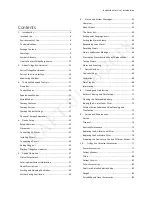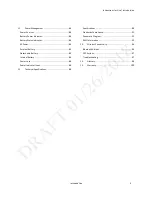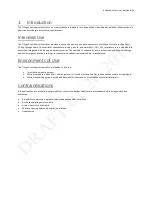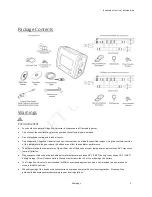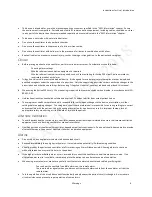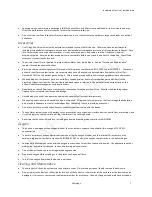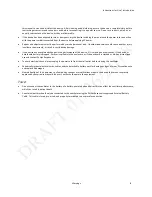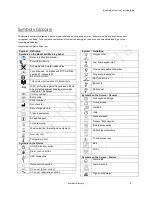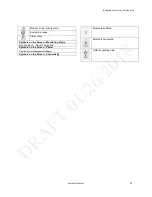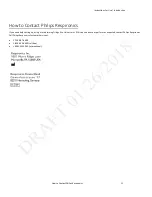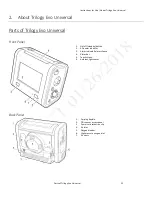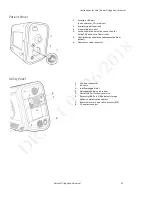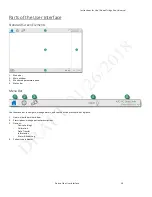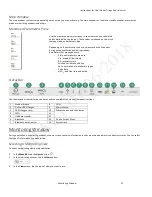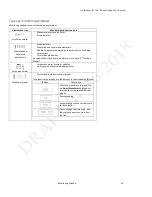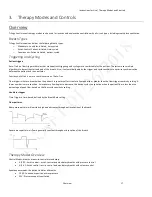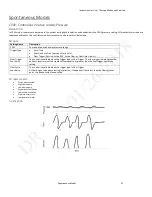
Instructions for Use | Introduction
Warnings
6
•
This device is intended for use in the electromagnetic environment specified in the “EMC Information” chapter. Ensure
the environment is compatible. Portable and mobile RF communications equipment, including cables, should be no closer
to any part of the device than the recommended separation distance indicated in the “EMC Information” chapter.
•
This device is not made with natural rubber latex.
•
Do not use the ventilator in a hyperbaric chamber.
•
Do not use the ventilator in the presence of nitric or nitrous oxide.
•
Do not use the ventilator with helium or in the presence of mixtures in combination with helium.
•
Route all cables in a manner to prevent injury, such as tripping or strangulation, to the patient and caregiver.
Clinical
•
Before placing a patient on the ventilator, perform a clinical assessment. Considerations should include:
-
Choosing alarm settings
-
Whether alternative ventilation equipment is required
-
Whether alternative monitors are required, such as Vte monitoring for Active PAP circuit, pulse oximeter or
respiratory monitor with alarm
•
Trilogy Evo Universal is a restricted medical device. It is designed for use by respiratory therapists or other trained and
qualified caregivers under the supervision of a physician. Only the supervising physician’s orders authorize changes to the
prescription and other device settings. Before using Trilogy Evo Universal, you must read and understand this manual.
•
When using the ActivePAP circuit, CO
2
monitoring is required to measure exhaled carbon dioxide, in accordance with ISO
80601-2-55.
•
Unintentional leaks cause exhaled volume and expired CO
2
values to differ from actual patient values.
•
The caregiver or health care professional is responsible for verifying any changes to the device, prescription, or other
settings before applying changes. The caregiver or health care professional is responsible for ensuring settings are correct
and compatible with the patient. Using the wrong prescription for a patient may result in improper therapy, lack of
appropriate safety monitoring, or risk of death or injury to the patient.
Alternate Ventilation
•
To avoid patient death or serious injury, ventilator-dependent patients require immediate access to alternate ventilation
equipment, such as a back-up ventilator or manual resuscitator.
•
Qualified personnel should monitor ventilator-dependent patients continuously. Personnel should be prepared to provide
alternate therapy in the event of ventilator failure or inoperative equipment.
Alarms
•
Do not rely on any single alarm to detect a disconnected circuit.
•
Respond immediately to any high priority alarm. It may indicate a potentially life-threatening condition.
•
Visually monitor the patient and ventilator at all times during an Alarm Silence period. Allowing alarms to continue
without intervention may result in harm to the patient.
•
If the high-priority Low Battery alarm occurs, immediately connect the ventilator to an alternate power source. If no
alternate power source is available, immediately place the patient on an alternate source of ventilation.
•
When using a remote alarm, make sure you fully test the remote alarm connector and cable by verifying that:
-
You can hear the ventilator’s audible alarms on the remote alarm.
-
The remote alarm signals when you disconnect the remote alarm cable from the ventilator or from the
remote alarm
•
Test the operation of the circuit disconnect function daily and whenever the patient circuit is changed. An increase in
circuit resistance can prevent proper operation of some alarms.


